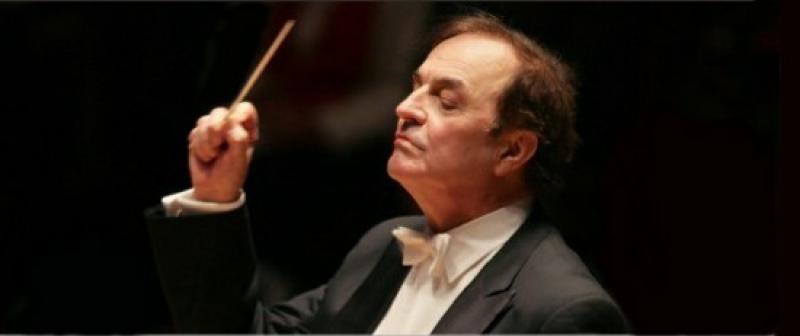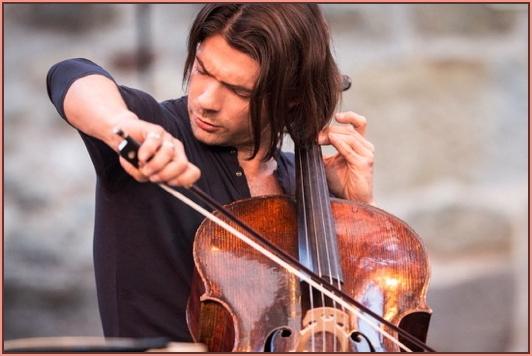Charles Dutoit gets the best from the Royal Philharmonic. He conducts with broad, sweeping gestures, and the orchestra responds with dramatic immediacy and vivid colours. This concert’s programme was well chosen to play to their shared strengths, and the results were impressive: colourful Respighi, muscular Dvořák and taut, compelling Stravinsky.
Respighi’s Fountains of Rome opens and closes with evocations of dawn and dusk. Dutoit has little interest in miniature, fragile textures, and never ventures into the quietest dynamics. But he and the orchestra compensate with luminous colours and crystal clear lines, offering all the atmosphere the music requires.
Capuçon often performs with a wide, heart-on-sleeve vibrato
The approach is bold and confident, but varied too, and fully in the spirit of Respighi’s evocative tone-painting. Impeccable string ensemble provided the foundation, over which the vibrant colours and textures of the winds and percussion played out. Strident horn calls at the start of the second movement were particularly satisfying, as were the ebullient celesta and harp lines that followed. Other conductors may play more on details of nuance here, but Dutoit’s clarity and focus made for an equally compelling reading.
Gautier Capuçon fits easily into this dynamic. He, too, is a muscular performer, offering variety of texture and mood, but never compromising in consistency of tone. He has the volume and projection to easily complete with the full orchestra in Dvořák’s Cello Concerto, allowing Dutoit to give a typically dynamic and symphonic reading.
Capuçon often performs with a wide, heart-on-sleeve vibrato, but in this concerto he reserved that for the main theme of the first movement. Elsewhere, he focused his tone, the better to clarify the complex textures, especially in his interplay with the orchestral soloists (the duet with the leader in the finale was a particularly magical moment). That lean tone was particularly apposite in the slow movement, allowing him to sing the rustic folk melody without undue sophistication. Occasionally he took it a little too far, pushing out the climaxes with an almost oppressive intensity. But each soon subsided as he followed the contours of the melody back to a position of repose.
 Stravinsky’s Petrushka is another showpiece of orchestral colour and atmosphere, especially in the original 1911 version presented here. Again, Dutoit (pictured above, photo courtesy of the Philadelphia Orchestra) painted the scenes in broad, bold strokes. The complex rhythms and juxtapositions of the opening Shrovetide Fair were articulated cleanly enough, but never seemed to be the focus of the conductor’s interest. Instead, he was intent on drawing out the lurid details of Stravinsky’s orchestral tone painting, the scurrying harps, the wild clarinet runs, the incisive brass staccatos and fatalistic percussion interjections.
Stravinsky’s Petrushka is another showpiece of orchestral colour and atmosphere, especially in the original 1911 version presented here. Again, Dutoit (pictured above, photo courtesy of the Philadelphia Orchestra) painted the scenes in broad, bold strokes. The complex rhythms and juxtapositions of the opening Shrovetide Fair were articulated cleanly enough, but never seemed to be the focus of the conductor’s interest. Instead, he was intent on drawing out the lurid details of Stravinsky’s orchestral tone painting, the scurrying harps, the wild clarinet runs, the incisive brass staccatos and fatalistic percussion interjections.
Tonal control was occasionally compromised in the louder tuttis, especially in the brass, but balance was always finely judged. The unity of ensemble in the string section again proved a valuable asset, cleanly articulating Stravinsky’s complex rhythms and always affording the music a suitable gravitas. The ending was particularly effective, Petrushka’s ghost invoked through a dark-coloured soprano trumpet solo over dull, lifeless pizzicatos in the strings: a chilling conclusion here perfectly executed.
- This concert is available on BBC 3 iPlayer for 30 days














Add comment